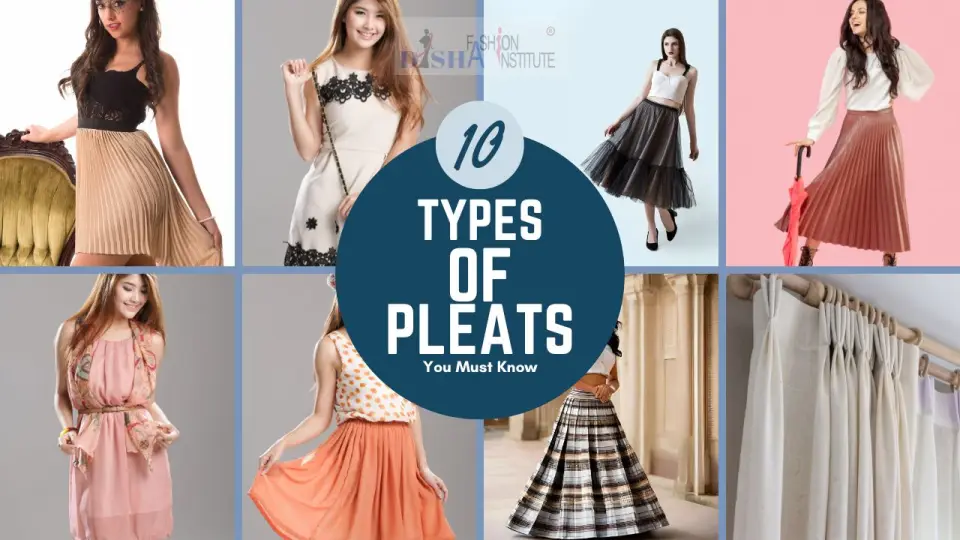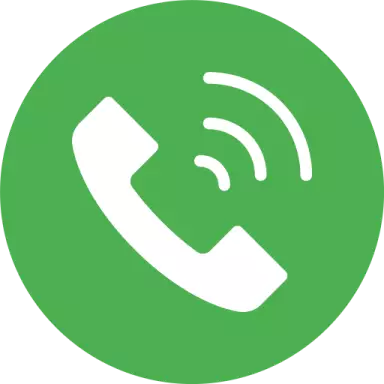The Ultimate Guide: What Are Pleats? Exploring the Top 10 Types of Pleats in Fashion and Home Décor!
What are Pleats in Clothing?
Pleats, at their core, are deliberate folds artfully integrated into clothing to manage and enhance its fullness. Beyond serving as decorative elements, they play a crucial role in shaping garments, infusing them with volume, and facilitating graceful movement. In this blog post, I will discuss the vital role of pleats in garments, different types of pleats, and their diverse applications.
Table of Content
- Why are Pleats Used in Clothing?
- Different Types of Pleats
- Conclusion: Unraveling the Artistry of Different Types of Pleats
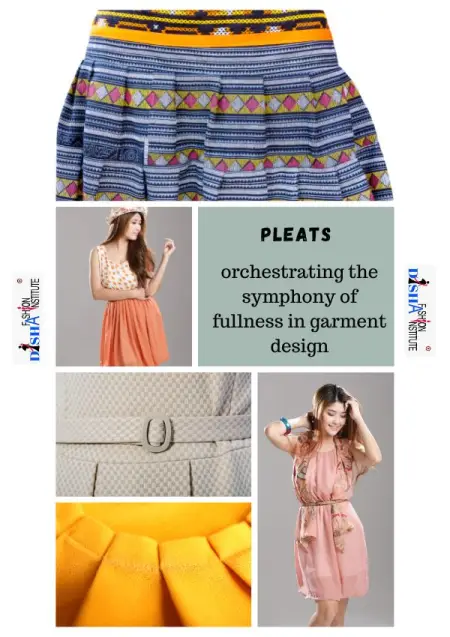
Why are Pleats Used in Clothing?
Now, let's understand the necessity that makes pleats an indispensable element in the world of sewing:
- Enhanced Aesthetics: Pleats aren't just folds; they are the brushstrokes that paint a picture of beauty. When strategically placed, they elevate the visual appeal of a dress, adding a touch of allure and sophistication.
- Fullness Redefined: Think of a dress that moves gracefully and hugs the body gently. Pleats make this happen by adding extra fabric, making the dress look full, and turning it into a stylish statement rather than just regular clothing.
- Shaping the Silhouette: Besides making clothes look good, pleats also help shape them. It's like adding unique details to tailoring, making sure each piece of clothing fits nicely and looks stylish on the body.
- Easy Movement:Often, pleats make the clothes stretchy and effortless to move in. They provide flexibility, allowing for comfortable bending, stretching, and walking.
Different Types of Pleats
#1 Knife Pleats
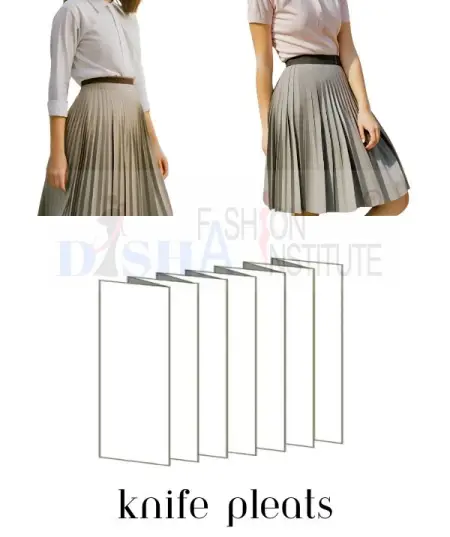
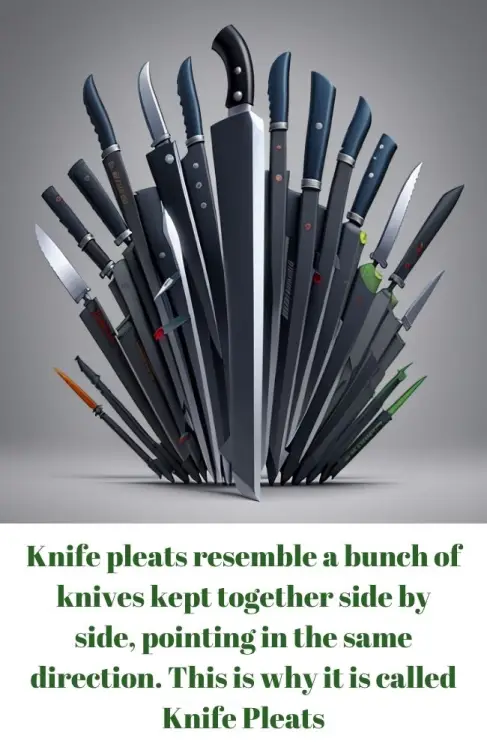
Knife pleats are a stylish alternative to gathers, ranging from 1/2" to 2" in width. These pleats lay flat and uniformly fold in a single direction, either towards the outer side of the dress, be it on the right or left. Found commonly in skirts and on the shoulders of tops, creating a knife pleat involves stitching 21⁄2 cm at the bottom, leaving the remaining part untouched, and then pressing it.
This types of pleats are characterized by its narrow and even folds, all folding consistently in one direction, forming a captivating zig-zag pattern. This unique configuration not only adds flair but also allows the fabric to move freely, maintaining a smooth silhouette without any unwanted bunching or gathering.
Notably, skirts or pants adorned with knife pleats can introduce considerable volume, so achieving a balanced look is key. Pairing them with a fitted top, tucked blouse, or snug sweater can create a harmonious and proportionate appearance, ensuring you showcase the elegance of knife pleats without overwhelming your outfit.
How to Sew Knife Pleats?
#2 Box Pleats

Box pleats are types of pleats that are of a distinctive type, formed on the right side of the fabric, elegantly folded outwards and away from each other—one on the left-hand side and the other on the right-hand side. Resembling a box, these pleats are aptly named box pleats. Widely utilized in shirts, skirts, jackets, and children's clothing. The creation of a box pleat involves carefully selecting a specific amount of fabric, followed by marking and then folding and stitching along its length.
To bring a box pleat to life, a temporary stitch is initially applied to the section of the pleat that needs folding to prevent it from opening prematurely. Subsequently, a permanent stitch is added, and the temporary one is skillfully opened, resulting in the distinctive box-like shape formed by two wide pleats folded in opposite directions.
Box pleats are renowned for their ability to impart a full and voluminous appearance, making them a popular choice for both formal and casual attire. Additionally, they contribute to the overall structure of a garment, enhancing comfort. This pleat variety frequently graces the hemlines of skirts, the contours of dresses, and the uniformity of school attire.
When it comes to styling box pleats, a cinched waist with a belt adds a touch of flair. Optimal proportions can be achieved by pairing box pleats with classic elements, such as a well-tailored blouse, creating a timeless and sophisticated ensemble.
How Do You Sew Box Pleats?
#3 Inverted Box Pleats
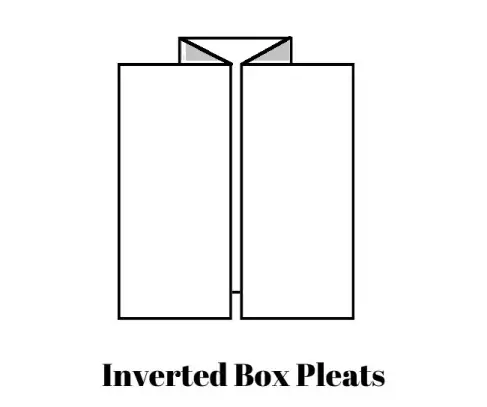
Inverted box pleats are kind of like the opposite of regular box pleats. Instead of the pleats folding away from each other, they come together with their edges meeting. It's like turning a box pleat upside down. This gives a different look because the fabric is folded in the opposite way.
The cool thing about inverted box pleats is that they quietly manage extra fabric, making clothes comfy and looking good. They're often used in uniforms and kids' skirts, making them practical and a bit fancy at the same time. So, inverted box pleats are a neat choice when you want clothes that are both comfy and stylish.
How to Sew Inverted Box Pleats?
#4 Accordion Pleats
Accordion pleats mimic the folds of a musical accordion—thin, straight, and consistently the same width, usually ranging from 3 to 13 mm. These pleats sit closely side by side, forming a tidy and even appearance. Unlike some pleats, accordion pleats don't have stitches at the bottom.
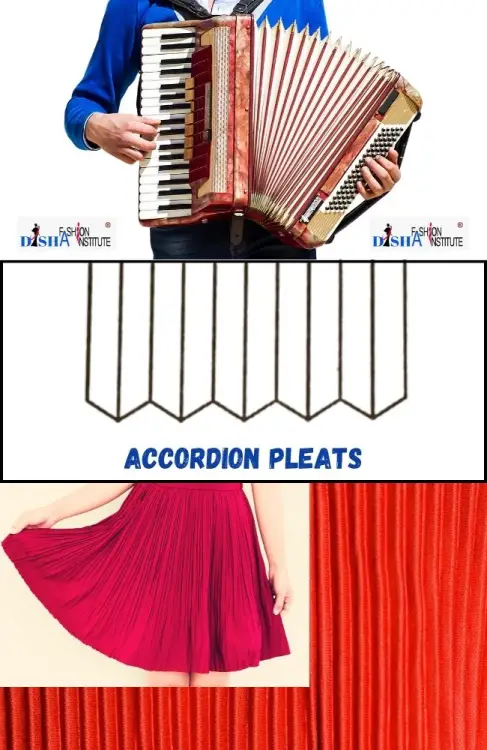
They're not just a pretty detail; accordion pleats bring a stylish touch to skirts, sleeve designs, and more. They are often crafted in fabrics known for their permanent press, ensuring the pleats extend seamlessly from the top down to the hem of the skirt. These pleats are specially sewn to stretch or compress while maintaining their shape.
This unique sewing technique allows the garment to move harmoniously with the body, resulting in a distinct and flattering silhouette. So, accordion pleats not only look good but also add a practical element to clothing by allowing comfortable and flexible movement.

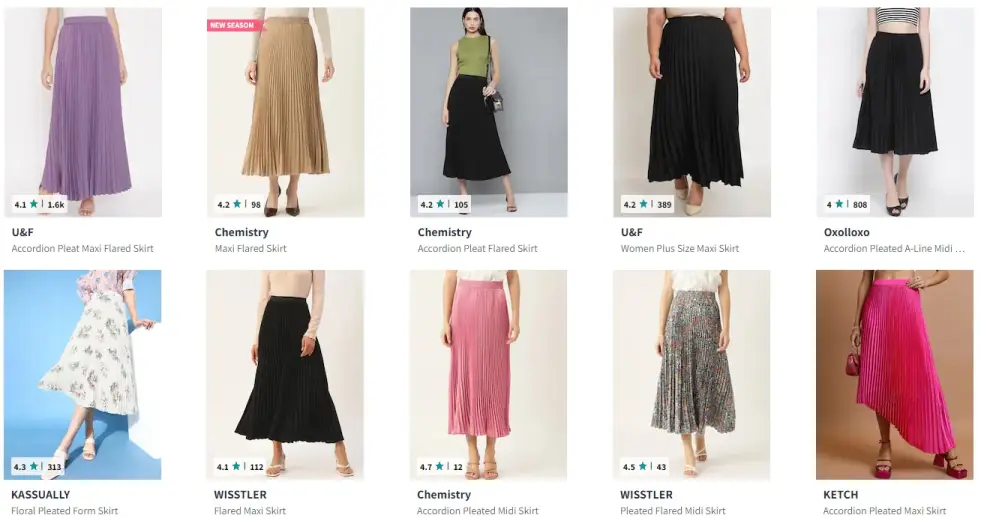
How to Sew Accordion Pleats?
#5 Meet Pleats
It's called a meet pleat when inverted pleats come together on the right side after stitching. Meet pleats are commonly found in pants, shorts, skirts, shirts, and more.
How to Sew Meet Pleats?
#6 Sunburst Pleats or Sunray Pleats
Sunburst pleats are a captivating pleating style where the pleats fan out and gently graduate from the waist, most commonly found on circular skirts. These pleats create a distinctive sunburst pattern radiating outward from a central point. The pleats are carefully sewn at an angle to achieve this effect, resulting in a fan-like or curved appearance.
What makes sunburst pleats truly enchanting is their dynamic nature. As the wearer moves, the pleats can shift and move, contributing to a dynamic and inherently flattering silhouette. This characteristic makes sunburst pleats an excellent choice for garments where movement and flow are desired, adding a touch of grace to the overall design.
Sunray pleats, a variation of sunburst pleats, further enhance the versatility of this pleating style. The fabric in sunray pleats can be manipulated to create various shapes and textures, allowing for a playful and creative approach to garment design. Whether for skirts or other flowing garments, sunburst pleats bring an element of movement and visual interest, making them a delightful choice for those seeking a lively and stylish aesthetic.
How to Make Sunray Pleats?
#7 Kick Pleats
A kick pleat is a short pleat at the bottom of a skirt or pair of pants. This type of pleat is strategically incorporated to facilitate ease of movement, particularly during activities like walking. The unique feature of kick pleats lies in their dynamic functionality. As you walk, these pleats open up, enabling the fabric to move gracefully and accommodating the natural motion of the legs without constriction.

Why are kick pleats named after 'Kick'?
The term "kick" in kick pleats is derived from the idea that when you take a step or kick forward, these pleats open up, providing the necessary room for the legs to move freely. The purpose of kick pleats is to enhance comfort and mobility without compromising on the polished appearance of the garment.
When the wearer is stationary or standing still, the kick pleats close seamlessly, maintaining a neat and tailored aesthetic. This dual functionality makes kick pleats a practical and stylish addition to skirts and pants, balancing the need for movement and a well-groomed appearance. They combine practicality with elegance, allowing the garment to adapt to the wearer's activity level while preserving a refined silhouette.

How to Sew Kick Pleats?
Did you ask how many types of curtain pleats exist? The following 3 types of pleats i.e., Cartridge pleats, Goblet pleats, and Pinch pleats, are mainly used in curtains. But there exist many other different types of curtain pleats. It is another world to explore. I will make a separate blog post on various types of curtain pleats and how to sew them.
#8 Cartridge Pleats
These pleats are named after the resemblance of their gathered folds to the chambers of a cartridge, like those used in historical firearms. Cartridge pleats are characterized by their fullness and the way they are attached to a waistband or another fabric edge.
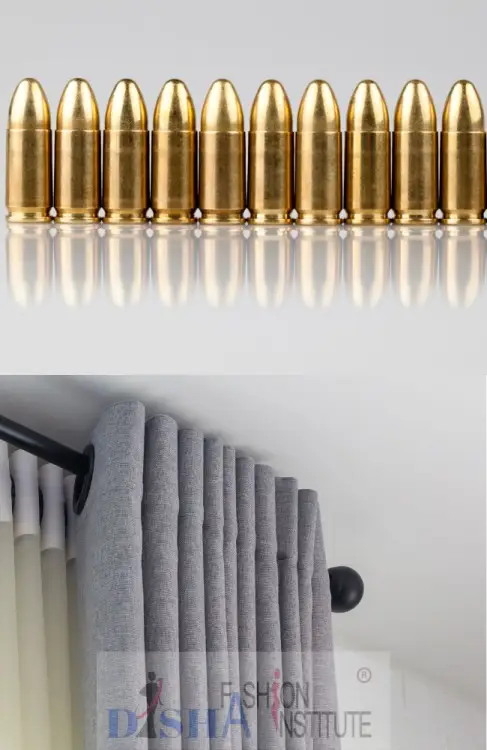
Uses of Cartridge Pleats
Historical GarmentsCartridge pleats have a historical connotation and are often associated with period clothing, particularly from the 16th to 19th centuries.
Drapery and CurtainsIn addition to clothing, cartridge pleats are also utilized in home decor, especially in the creation of drapery and curtains. They add a touch of elegance and can be adjusted to control the amount of fabric gathered.
How to Make Cartridge Pleated Curtains?
How to Sew Cartridge Pleats for Garments?
#9 Goblet Pleats
These pleats derive their name from their resemblance to the shape of a goblet or wine glass when viewed from the side. These types of pleats are mainly used in interior designs like curtains. A Goblet pleat is a distinctive style of drapery heading known for its opulent and voluminous appearance, setting it apart from other pleat varieties. Particularly well-suited for weightier fabrics like velvet, brocade, and leather, Goblet pleats add a touch of luxury and sophistication to window treatments and curtains.
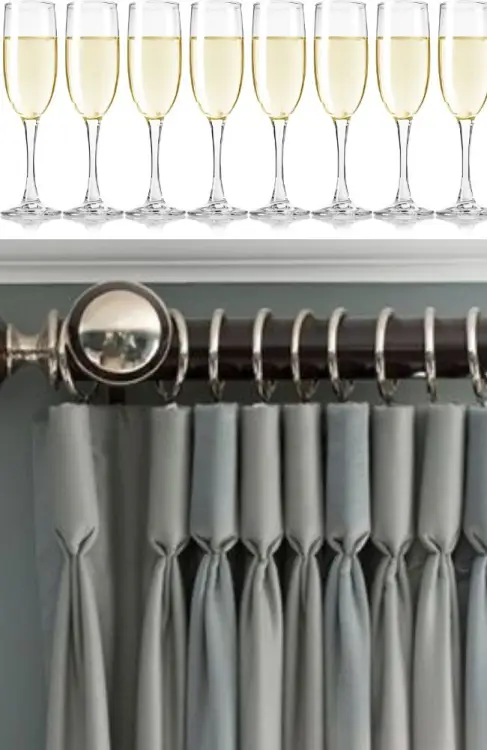
The creation of this drapery involves skillfully taking strips of fabric from the top edge of the drape and delicately pinching them together to form a distinctive goblet shape. This unique folding technique not only enhances the richness of the fabric but also provides an elegant and structured look to the overall window dressing. Goblet pleats are a superb choice when aiming for a lavish and refined ambience in interior decor, especially in spaces where a more sumptuous aesthetic is desired.

How to Sew Goblet Pleats?
#10 Pinch Pleats
Pinch pleats, commonly employed in curtain design, involve the creation of three small, equal pleats on the upper edge. These initial pleats are temporarily stitched together, followed by the formation of an additional three pleats in the downward direction, secured with permanent stitching.
The term "pinch" in "pinch pleats" refers to the way the fabric is gathered and pinched together to create the pleats.
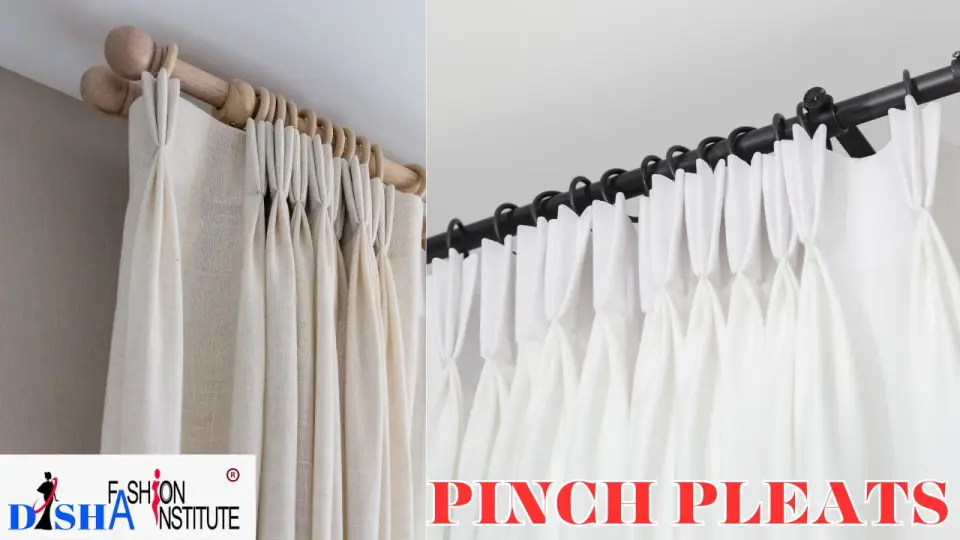
Pinch pleats come in various types, determined by the number of pleats gathered together. We've discussed the triple-pinch pleat curtain earlier, and there are also single-pinch and double-pinch pleat variations.
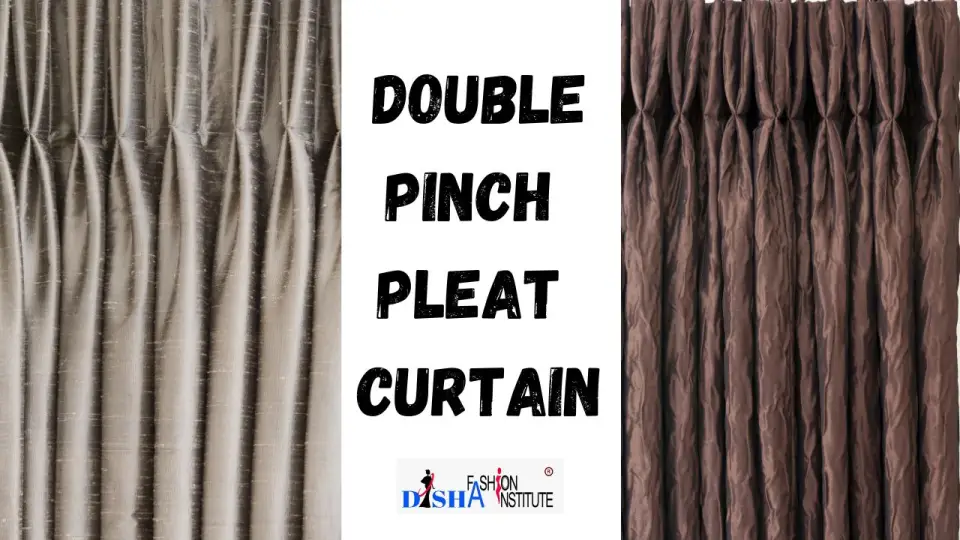
How to Sew Pinch Pleats?
Conclusion: Unraveling the Artistry of Different Types of Pleats
In this comprehensive guide, we've delved deep into the enchanting world of pleats—those deliberate folds that add a touch of magic to both fashion and home décor. Understanding the essence of pleats in clothing, we've explored how these strategic folds go beyond mere aesthetics to shape garments, infuse volume, and allow graceful movement.
From the captivating Knife Pleats, with their narrow and consistent folds, to the structured elegance of Box Pleats and the dynamic Sunburst Pleats that radiate like a burst of sunshine, each pleat tells a unique story.
As we conclude our exploration of pleats, the journey doesn't end here. Our next destination is equally exciting—Types of Darts and Types of Plackets await your discovery. Click the button below to embark on the next chapter of our sewing adventure.
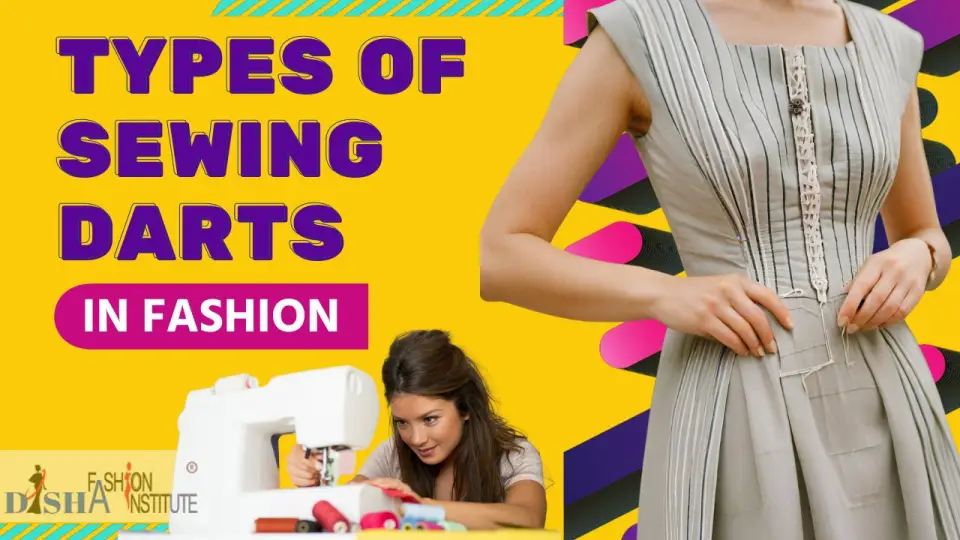
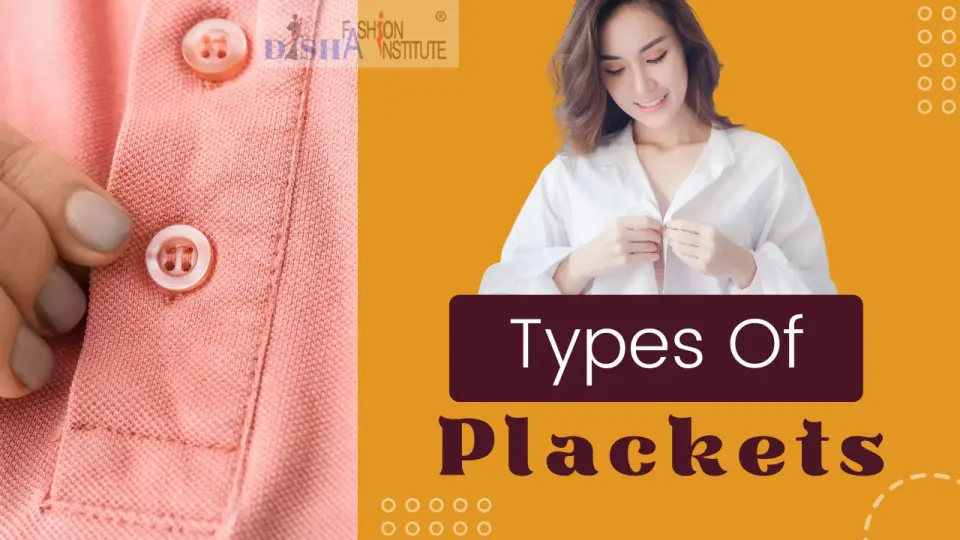
But before you go, we invite you to try your hand at creating pleats at home. Experiment with different fabrics and various styles and perhaps even combine multiple pleat types for a truly personalized touch. We'd love to see your creations! Post pictures in the comment section below or share your thoughts, suggestions, or any experiences you've had with pleats.
Happy sewing, and may your fabric always dance gracefully with every pleat you create!
![[DISHA] The Best Tailoring School](/media/plg_jspeed/cache/images/Disha_logo.webp)
